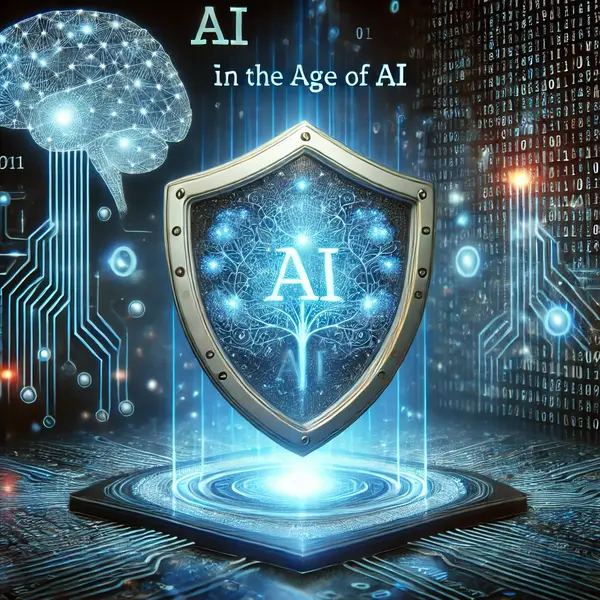As artificial intelligence (AI) becomes increasingly sophisticated, it is transforming every aspect of our lives, from how we work to how we secure our digital world. While AI offers unparalleled benefits, it also opens the door to new and more dangerous cybersecurity threats. AI-powered attacks are becoming a pressing challenge, forcing organizations and governments to rethink their approach to cybersecurity. Let’s explore the evolving landscape of cybersecurity in an era dominated by AI-driven threats.
1. The Rise of AI-Powered Cyber Attacks
AI has introduced a new level of sophistication to cyberattacks. Hackers now leverage AI to automate tasks, evade detection, and exploit vulnerabilities with greater precision. These AI-driven attacks can mimic human behaviour, making them harder to identify and neutralize. Common examples include:
- Automated Phishing: AI tools can craft convincing phishing emails by analysing a target’s social media and communication patterns.
- Malware Evolution: AI enables malware to adapt and learn, bypassing traditional antivirus defences.
- Deepfake Technology: Cybercriminals use AI-generated deepfake videos or audio to impersonate executives, tricking employees into transferring funds or sharing sensitive information.
2. AI as a Double-Edged Sword
While AI poses significant risks, it is also a powerful tool for enhancing cybersecurity defences. Organizations are deploying AI to:
- Threat Detection: AI systems can analyse vast amounts of data to identify unusual patterns or anomalies, flagging potential threats before they escalate.
- Incident Response: Automated systems powered by AI can respond to attacks in real time, isolating compromised systems and minimizing damage.
- Predictive Analytics: By analysing historical data, AI can predict potential vulnerabilities and proactively secure systems.
However, this creates a cybersecurity arms race, where both attackers and defenders are continuously advancing their AI capabilities.
3. Emerging Trends in AI-Powered Cybersecurity
Several trends are shaping the future of cybersecurity in the age of AI:
- Adversarial AI: Attackers are designing AI algorithms specifically to outsmart defensive AI systems. For instance, adversarial examples can trick machine learning models into making incorrect decisions.
- Behavioural Biometrics: AI-driven systems are moving beyond passwords, using behavioral patterns such as typing speed or mouse movements to authenticate users.
- Zero-Trust Architecture: AI is enabling more robust zero-trust models, where every user and device must be continuously verified.
- Cybersecurity Mesh: This decentralized approach allows organizations to secure their digital assets across diverse environments with the help of AI.
4. Challenges in Combating AI-Driven Threats
The growing reliance on AI in cybersecurity presents several challenges:
- Data Dependency: AI systems require vast amounts of high-quality data to function effectively. A lack of data or biased datasets can compromise their performance.
- Skill Gap: The rapid adoption of AI tools has outpaced the availability of skilled professionals who can manage and secure these systems.
- Ethical Concerns: Balancing privacy with security remains a challenge as AI systems analyze personal data to detect threats.
- Cost Barriers: Advanced AI-driven cybersecurity solutions can be prohibitively expensive for small businesses and developing nations.
5. Preparing for the Future
To stay ahead of AI-powered cyberattacks, organizations and individuals must adopt a proactive approach:
- Invest in AI Research: Governments and companies should invest in AI research to develop more resilient cybersecurity systems.
- Continuous Education: Cybersecurity professionals must stay updated on the latest AI trends and tools to effectively combat emerging threats.
- Public-Private Partnerships: Collaboration between governments, tech companies, and academia can lead to innovative solutions and shared intelligence.
- Stronger Regulations: Policymakers must establish clear guidelines for the ethical use of AI in cybersecurity.
6. The Role of Individuals in Cybersecurity
While organizations play a significant role in cybersecurity, individuals must also take responsibility for their digital safety. Simple practices, such as using strong passwords, enabling two-factor authentication, and staying vigilant against phishing scams, can go a long way in protecting personal data.
Conclusion
The future of cybersecurity in an era of AI-powered attacks is both exciting and daunting. As AI continues to evolve, it will undoubtedly reshape the threat landscape, creating new challenges and opportunities. By leveraging AI responsibly and investing in robust cybersecurity measures, we can build a safer digital world. However, success will require a collective effort from governments, organizations, and individuals alike.
